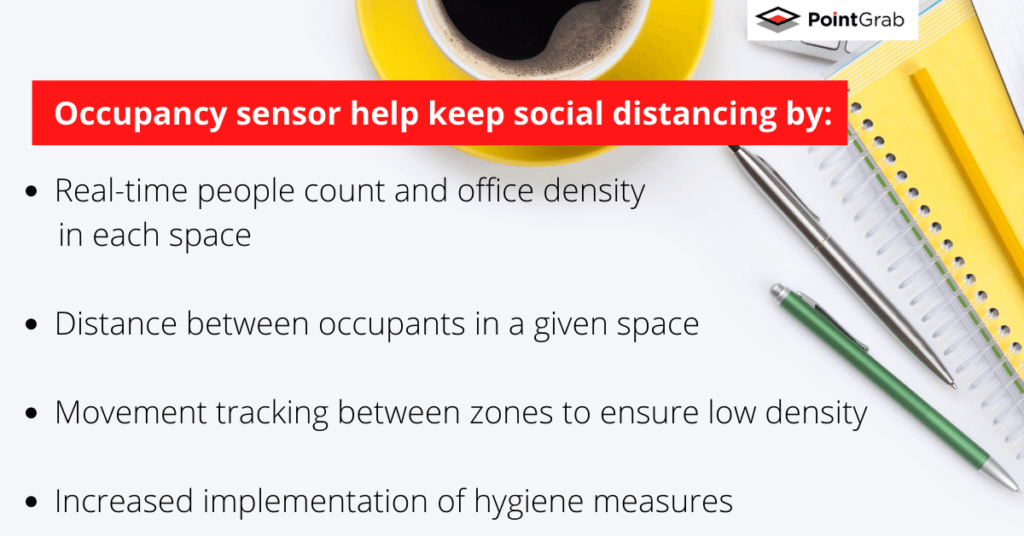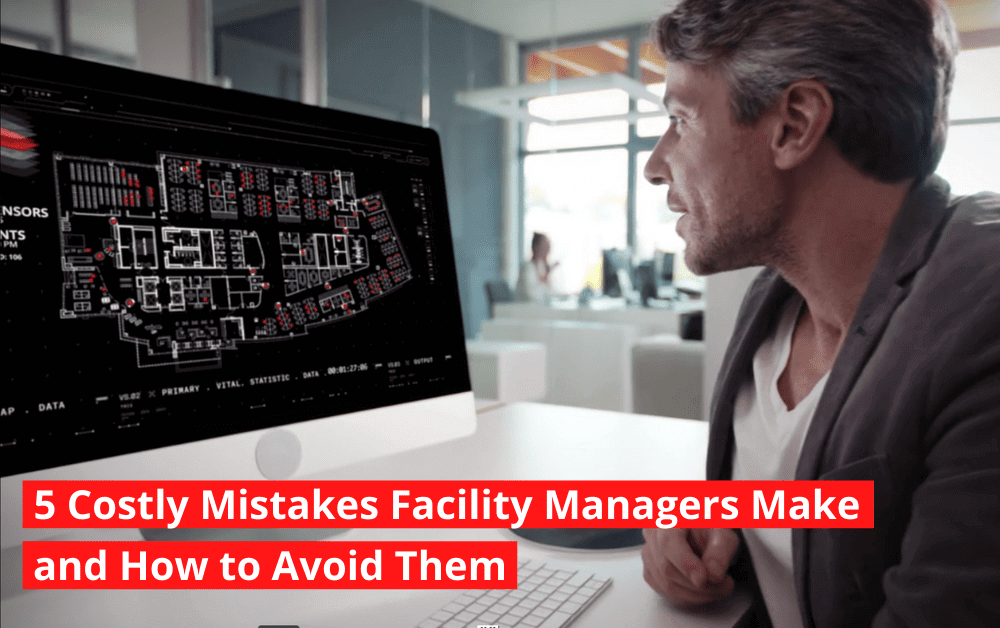Is There a “One Stop Shop” Solution that can Drive Your Back to Office Strategy?
Workplace occupancy sensors are the easiest and most cost-effective solution for safe back to office strategy.
Organizations and professionals around the world are getting restless after months of working remotely. Managers want to interact with their teams in a traditional office setting, but also do not want to put the employees at risk. Offices will reopen, even if it is too early to determine if this is going to be for all employees on all days of the week.

What can we do to mitigate fear and public health risks as we head back to the office? Install workplace occupancy sensors, of course.
Use workplace occupancy sensors to maintain social distancing at the office
Social distancing is the key to a safe back to office strategy, but enforcing it can be challenging as government policies aim to protect public health, and organizations must comply. Having a clear plan to maintain social distancing at the office is essential to the success of safely getting back to the office.
Workplace occupancy sensors take out most of the hassle by seamlessly and non-intrusively gathering real-time anonymous occupancy data events. So how can workplace occupancy sensors help enforce social distancing?
PointGrab upgraded its smart office workplace sensors to provide:
- Real-time people count and office density in each space
- Distance between occupants in a given space
- Movement tracking between zones to ensure low density
- Increased implementation of hygiene measures
To summarize, workplace occupancy sensors are the only social distancing plan you need.

Workplace occupancy sensors can create an effective cleaning schedule
Another large challenge is creating a hygienically safe working environment. Workplace occupancy sensors ensure your workplace stays germ-free by launching an automated cleaning schedule based on use.
Take meeting rooms for example.
At the end of a meeting, it’s recommended to clean the door handle, desk, phone, etc. So once the room is vacated, a ping is sent to the cleaning team. The same logic can be applied in hot desk areas, shared kitchen areas, and other common areas. Input your preferences and the sensors do all the work for you. Well, most of it.
Increase access to sanitation products based on workplace occupancy sensors
Do you have any idea about your office’s high-traffic areas? If you answer this question without data, you’re likely not covering all your bases. Observation has proved itself as a faulty and unreliable way to measure office space utilization and traffic.
Data from workplace occupancy sensors can help you spot “hidden” high-traffic places easily by eliminates all the guesswork, helping you make smart decisions, and providing employees the tools to stay safe at the office.
Workplace occupancy sensors provide real-time hot desk occupancy data
Give eager employees a safe return to work plan. Workplace occupancy sensors empower employees to create their own in-office schedule by using a “book your desk” system.
![]()
Managers choose what seats to open and employees can book their desks in real-time or ahead of time. PointGrab’s sensors can recognize a seat is taken even if the occupant is not moving. PointGrab’s occupancy sensors can also be programmed to release booked desks in case of a no-show.
The workplace occupancy sensors software mostly manages itself based on your preferences, giving you more time to do what you do best.
The time for a smart office is now
The cost of commercial real estate is high, and sometimes, resources are not being managed efficiently. However, stopping this wastefulness could not have happened in a better time. Seize the day while your spacious commercial real estate building is mostly empty. Plus, this type of solution pays for itself as it helps you save in real estate costs and is great for the environment.
Installation is lightning quick and it takes only 15 minutes. Go ahead, carpe diem.
Reduce operating costs with workplace occupancy sensors
Teecom released a report showing how workplace occupancy sensors help reduce operation costs. Nearly a third of office building operations costs are spent on energy. 17% of energy costs are for lighting the building. Installing workplace occupancy sensors to manage electricity consumption can reach $28,000 saved in a year.
Workplace occupancy sensors collect insightful data you can use to be efficient with your office space and energy usage. The statistics are the same for hundreds of companies. Think about what else you can do with the money you save on electricity?
Help employees fight anxiety and boost productivity using workplace occupancy sensors
When many employees around the world switched to working from home, they were excited. Some thought their dream came true. For a month or 2 that was the case, but then many people found themselves home alone. Feelings of anxiety often affect employee motivation and overall wellbeing.
You have the power to reduce stress and help employees fight the devastating effects of loneliness and anxiety by providing employees a safe return-to-work strategy and a full-proof plan and clear guidelines on how the office space is attentive to employee needs.
Summary
![]()
The health risk is not going anywhere but organizations must carry on. Governments create new rules so we can continue our daily routine while we look for a cure. As long as organizations comply, the show can and must go on.
Workplace occupancy sensors help organizations comply with disease mitigation, all the while upgrading employee services and reducing business operations costs.


